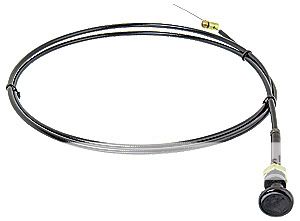Granted, they run the carb as per the rules. But let's examine your statement for just a second and see where that leads.
Let's pretend we have Brand R carburetor, capable of flowing 750 CFM of air, Brand E carburetor, capable of flowing 750 CFM of air and Brand H carburetor, capable of flowing 750 CFM of air.
Now if Brand H is "tuned", it will be able to adequately meter gasoline into the airstream to provide X horsepower at Wide Open Throttle.
But what if we also "tune" Brand R and Brand E, so they are both capable of adequately metering the same amount of gasoline into the airstream at WOT?
Airflow is the same and pounds of fuel per hour is the same, so how can one carb run any better than the other two? Answer? It can't. The motor has no clue what metering device is bolted to its intake manifold.
Assuming the world is perfect and the test mule is capable of stoichiometric combustion (yeah, I know, I'm dreaming in Technicolor), then all three carbs will provide the same level of power, based on the simple principle of the air-fuel ratio (air mass/fuel mass) being identical.
Now, if I wake up, stop dreaming and look at some real-world facts -
Can I bring Brand H to an optimal performance level easier than Brand E or Brand R? Absolutely, I've got boxes full of squirters, accelerator pump cams, jets, air bleeds, lightened accelerator pump check-valves and floats. I've tuned Holley combinations I am willing to wager you have never seen. How about one Dominator and one split, running on a V-6? How about a pair of carbs, with one blocked off throttle bore each, running on a V-6? (And you thought the three barrel was history, didn't you?

) How about a pair of 4150's, with one pointing to the left and one pointing to the right, with the passenger sides of the main bodies and base plates milled off so the carbs can sit cheek-by-jowl? We countersunk mounting bolt holes into what was left of the base plates, which required removing the float bowls to access those mounting screws. And talk about a linkage nightmare!

I was modifying Holley base plates with a check-ball and a Phillips screwdriver, long before Bowling Green ever "developed" their now standard anti-backfire power valve protection.
So sure, as stated previously, I've been in and out of a lot of Holleys in the last 35 years and feel so comfortable with them that I am more likely to use a Holley that I am anything else.
But, the fact still remains if I am allowed the same inventory of parts for Brand R and Brand E, those carbs can be made to perform equally well. Which brings me back to my original statement, there are a lot of GM and Chrysler Super Stockers that are flying with those style carbs.
The fellow that cannot make Brand R or Brand E perform well is the fellow doesn't understand how they work.
Back in the day, before the advent of sheet-metal intakes and even before Larry at Brandywine experimented with the fiberglass intakes (yep, we tried one of them too), we would purchase the original Holley (pre-Weiand) tunnel rams and toss them up on a band saw and Z-cut them, so we could weld them back up to use on the 23 V-6's. I'm showing my age here, was that intake called the Pro-Ram?





